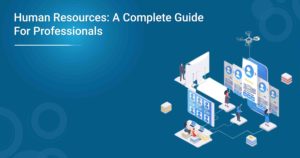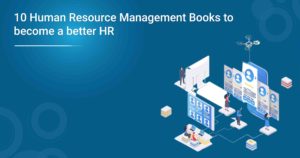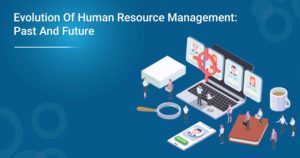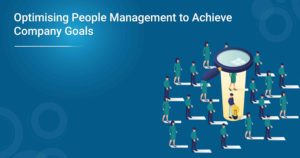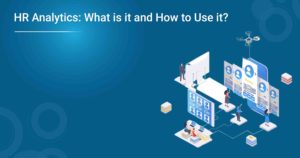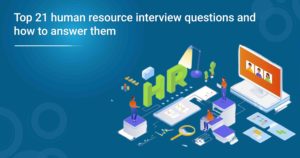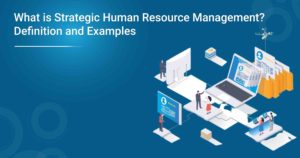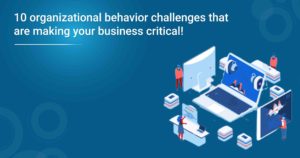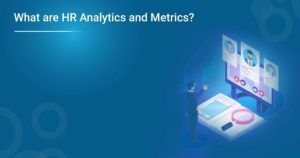What is HR Digital Transformation?
A company’s department in charge of everything employee-related is called human resources (HR). It involves researching, screening, choosing, onboarding, training, promoting, awarding, and firing employees and freelancers.
The HR department also follows suit with any new laws dictating how employees should be treated during the hiring, training, and dismissal phases.
Many business strategists claim that human resources are the most crucial of all corporate assets. That’s because team members can develop unique abilities, which over time, strengthens a company’s competitive advantage. Simply put, other resources need more potential. Human resources aim to utilise a company’s workforce as efficiently as possible. Human resources may address problems like:-
- Rewards and Remuneration,
- Hiring and Recruiting Personnel,
- Reward and Recognition During Onboarding,
- Organisational Growth, Culture, and Orientation,
- Utilising and Managing People Well
No matter the company’s size, the HR department is a crucial aspect of the operation. Its duties include increasing employee productivity and safeguarding the business from problems that might develop within the workforce. Compensation and benefits, hiring, dismissing, and staying current on any regulations that may affect the business and its employees are just a few of HR’s duties.
What is human resource digital transformation?
A digital transformation ideally indicates computer and analytical software replacing most (if not all) of the tasks businesses were performing manually. In other words, you’ll avail yourself of technology and let automatic procedures free you from monotonous and repetitive work. Additionally, you’ll prevent human errors, cut expenses, and establish an HR digital transformation department that respects the environment.
For many firms, the HR digital transformation remains a source of difficulties. It may be difficult, but not impossible. HR experts were still analysing the benefits and drawbacks of the HR digital transition a few years ago. Is it merely a joke and a cultural shift? Or is that how HR departments should proceed?
When it comes to the workplace, there are absolutely no limits to how digital transformations can be employed. The HR digital transformation is now here. Businesses require an HR digital transformation strategy that includes tools for involvement, mechanisation, and tracking information. HR digital transformation is how HR functions, using data to inform all aspects of HR, including payroll, rewards, and quality management. It opens a new window that shows the development and learnings.
An applicant tracking system is a wonderful illustration of digital human resources. These systems enable managers and staff to monitor their performance about predetermined objectives and goals. Using these tools, you can gather and save applicant data in a central database, making it simpler to identify prospects when positions open up. These platforms can also automatically send emails to candidates being considered for positions or new positions that become available.
Additionally, they contain performance reviews that ensure that your business complies with employment legislation. Maintaining the efficiency of the HR function, which has always been a crucial component in an organisation’s machinery, is one of the function’s main goals. HR digital transformation is becoming even more crucial for HR leaders because of the HR function’s growing significance as a strategic component of the business.
Also Read: Top 16 Qualities Of HR Manager You Must Know
Benefits of HR digital transformation
Artificial intelligence, robotic process automation, and digitalisation technologies have given businesses a new perspective, cut costs, and improved the data-driven and efficient nature of their processes. The technical effort of HR digital transformation is one of many difficult human problems it presents. Organisations must be equipped to handle this problem as the digital economy, the workforce’s abilities, and expectations change.
HR digital transformation is a type of process optimisation where SMAC (social, mobile, analytics, and cloud) technologies are used to improve the HR department’s productivity, effectiveness, and connectivity. Over the past ten years, HR digital transformation has expanded significantly, with many firms now utilising some digitalisation within the scope of the Human resource departments. In other words, it represents a fundamental change in how Human Resources operates.
- HR digital transformations are far more cost-effective than manual and paper-intensive old methods. Furthermore, they eliminate pointless meetings, saving the business and the staff members time and money.
- By enhancing decision-making abilities, forecasting capabilities, visibility into operations, and productivity, HR digital transformation helps to maximise employee productivity.
- Retaining your top performers is one of the top benefits of HR digitisation. Please do this by promptly reviewing/auditing their reports without snooping around their workstations. For work reports, you don’t have to speak with them every hour.
- The HR digital transformation makes goals and accomplishments more clear. So there is no longer a chance of confusion or conflict between teams.
- Beyond all expectations, HR digital transformation is transforming and refining corporate culture.
- To present, encouraging employees to speak, talk, or express fresh ideas, proposals, or POVs has been the best addition to HR digitisation. Employees will now be aware that they are being heard at all times.
- People analytics is a significant advantage of HR digital transformation. It aids HR professionals in keeping a close check on the welfare of their workforce.
- Hiring prejudice is a typical business issue that distracts people from teamwork and a productive environment. Unconscious bias is difficult to avoid, though. It is present from the beginning of the hiring process until the conclusion. HR digital transformation can help with this.
Stages Of HR Transformation
Now that we have discussed digital transformation in HR let’s move on to the more serious portion. This is where we break down the HR digital transformation process into different stages. Because an organisation cannot become entirely digital after being non-digitised for the longest years, these adjustments require time, which is essentially true transformation. Organisations must understand that they won’t be able to go digital by turning a switch. Instead, replacing outdated HR solutions with more up-to-date ones is a never-ending process. The following six stages serve as the foundation for this transformation strategy evolving in every organisation.
- Regular Business – Also known as the “we always did it this way” stage. HR procedures, technology, and personnel continue to rely on conventional HR solutions at this level. The leadership is uninterested in transformation since they need to see its worth. Before you can even think about your HR digital transformation journey, you must get beyond these obstacles.
- Active and Present – Welcome to the “let’s see how it goes” stage of this massive transformation. The top management has now understood the benefits of the HR digital transformation. To create small-scale test efforts and successfully implement technology innovations, HR staff members start working towards this initiative. By this time, innovation-related fields would also be expanding in the organisation.
- Formalised – Now that digitisation is well underway in the HR department, the project’s scope widens. Organisations now start conducting tests in a more organised manner to address particular business challenges faced during the transition. However, the higher-ups are only partially supportive because of massive monetary spending. Getting things done becomes crucial because moving onto the next stage of the HR digital transformation will need even more collaboration (and a larger budget).
- Strategic – At this shift stage, multidisciplinary teams in charge of digital transformation are given a place at the top management table. The bulk of the labour-intensive work has been finished. It is a wise use of time to try to persuade others of the advantages of HR digital transformation.
- Converged – Businesses are focusing on developing a solid interdisciplinary approach at this stage of the HR transformation journey to support the new strategy; it aids their customer-focused objectives.
- Innovative and adaptive – Now is the time for the HR digital transformation team to innovate and research fresh concepts. Though the concepts might seem strange, carry out test efforts in partnership with other departments. A significant business factor is the HR department’s digital revolution. Failure and experimentation both help to keep the required pace.
Real-life examples of HR Digital Transformation
We’ve now understood the transition journey in HR in detail, and we will now see real-life examples from the corporate world to understand how this transition truly appears. So some of the most renowned companies using HR digital transformation are:
- Google- Since it made people analytics accessible to everyone, the internet giant has been at the forefront of every transformation in the human resource department. Google employed analytics derived from employee feedback and surveys in 2008 to identify the behaviours of effective managers.
- Royal Dutch Shell – Shell had already noticed a skills gap in their personnel before the pandemic. Although the industry embraced artificial intelligence, machine learning, and other digital tools, Shell’s workforce needed to prepare. As a result, the oil giant should have spent more time revamping its HR platform that provided employees with the chance to acquire the skills required for the company to stay ahead of the competition.
- Unilever – The employment process at Unilever is being revised. The company is exploring social sites, computer gaming, and machine intelligence, among other things, to digitise further how they recruit.
- Cisco – Another brand that has walked this path is Cisco, increasing its efforts to integrate digitisation and match its HR with technology. Cisco holds hackathons to create new HR solutions, including the Ask Alex and YouBelong@Cisco apps. The latter is a voice command tool that offers quick responses to various HR questions, including expenses, vacation policies, etc.
- IBM – IBM is renowned for its work in developing cutting-edge digital HR solutions. The American technology company developed a digital training platform that offers employees a completely customised experience, among other things.
Difference between HR Digitization, HR Digitalization, and HR Digital Transformation
Even though everyone uses these three terms interchangeably, there is a distinction between them.
Before you start changing your HR procedures, you must appreciate this tiny difference.
The stages of the transformational HR process include HR digitisation, HR digitalisation, and HR digital transformation. Depending on where you are in that process, you will need to take specific steps to accomplish HR digital transformation.
- HR Digitization – Digitization in HR is now a common practice amongst businesses. It entails abandoning manual record-keeping methods and turning to digital alternatives. Its goal is to transfer analogue information into digital format for computer encoding. The main focus of the procedure is gathering information that will later be employed in digitalisation.
- HR Digitalization — Once the business feels confident about its digitisation of records, they advance with HR digitalisation, which is the next step. Here, some great tech-related products are used to enhance HR procedures. For instance, using a variety of collaborative platforms, HR professionals (recruiters, compliance officers, and talent experts) can design the ideal onboarding procedure specific to a given function.
- HR Digital Transformation — The Pinnacle for HR professionals is right here. However, it also contains a good dose of process automation and AI. Fully automated recruiting perfectly illustrates this, where software generates precise hiring decisions. In other words, we can say that digital transformation starts with data incorporated into the system (digitisation), which is then employed by various software (digitalisation) to enable or improve a process. Digitisation and digitalisation make the complete HR digital transformation in any business.
Importance Of HR Digital Transformation
HRs should ensure that the chosen technology puts people and culture first. Additionally, the changes should be welcomed by all when the business is shifting towards the HR digital transformation journey involving leadership and involving every employee.
Also Read: Salary Negotiation With HR: Tips To Succeed
HR digital transformation can be a process or an outcome. The change is both revolutionary and evolutionary. HR digital transformation is necessary for all businesses, small and large. A company’s aims and plans must align with current trends and transformations to remain competitive and significant in an emerging digital realm.
- The most recent software on the marketplace currently can track and control all aspects of your company’s workflow in a single location. It makes it simpler for recruiters and HR experts to monitor the hiring process in one location, ensuring that it takes much less time overall.
- With the help of HR digital transformation, hiring decisions are now completely based on the quality of the candidate pool and the available data, eliminating any possibility of personal bias.
- Employee engagement comprises a social shift, an enhancement in how things are done and how communication flows from the top to the bottom of the organisation and is much more than just a strategy.
- In essence, the ATS, or applicant tracking system, aids in screening and structuring the hiring process, making it simpler for the hiring manager to separate the candidates who fit the position from those who don’t.
- The HR department’s experts may also benefit from more personalised working arrangements that match each employee’s unique characteristic profiles, thanks to the HR digital transformation.
Challenges In HR Digital Transformation
As we know, the adoption and integration of digital technologies to alter how a business operates are referred to as digital transformation. Recent technological advances are sparking HR Digital transformation, and corporate executives are adopting new IT systems to boost productivity, efficiency, and revenues.
Many people have credited the growth of remote and blended work as the trigger for change; businesses were compelled to adopt solutions. Businesses are searching for the next technology to help their staff and the company as a whole now that they have experienced the real benefits of such technologies. The route towards HR digital transformation has many rewards in the end, but there are frequently numerous obstacles. Here are the four most typical problems with digital transformation and solutions.
- The use of digital technologies is a fundamental pillar of this transition. Despite the end-user experience possibly being straightforward to use, implementation would frequently demand a significant amount of expert technical knowledge.
- Employees may become frustrated while switching IT systems as they have to re-learn a program they may have used for a long time.
- Strategic planning is the secret to success, as with every important business choice. Business leaders sometimes need to be more precise in seeking new technology, which irritates staff members.
- Budgetary restrictions can significantly hinder this digital transformation for small and medium-sized enterprises. Poorly designed technology implementations frequently result in cost increases from scope creep and increased demands on time and resources.
The Bottom Line
Although the HR digital transformation presents numerous difficulties, HR is already skilled at overcoming them. The most effective HR leaders invest in new technologies to manage their staff more skillfully because they understand the advantages of transformation in HR. Simply knowing what questions to ask will work. If you also want skin in the game, register for one of a kind executive post graduate programme in HRM in India around HR Management from reputed institutes. This training will help you take advantage by being a strategic differentiator and making you ready to participate in the change.
More Information:
Top Employee Engagement Strategies To Strengthen Employee relations
What are HR Analytics and Metrics?








